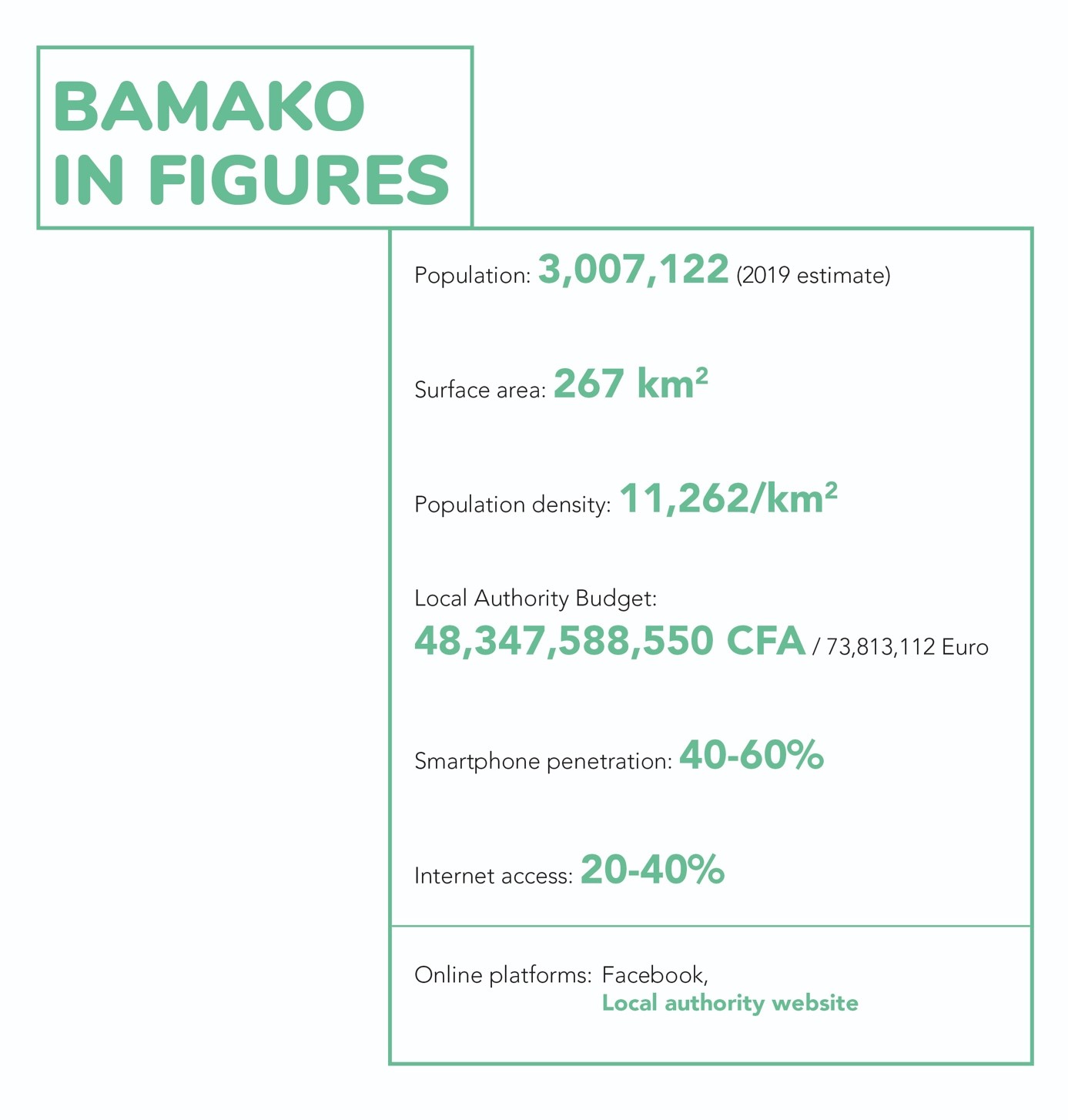Introduction
This section is the city profile for Bamako. The profile attempts to present the most important information about Bamako and the ASToN project, drawing on information gathered through a questionnaire, a series of interviews, and written questions.

About the city
 Bamako is the capital city of Mali, one of the fastest growing countries in the world by population. The city is situated around a section of the River Niger, which has historically put it at the heart of trade routes between West and North Africa, and today as a potential sub-regional hub. Bamako is undoubtedly the economic as well as political centre of Mali, with a population over ten times the second largest city, and 80% of all industrial businesses based within it.
Bamako is the capital city of Mali, one of the fastest growing countries in the world by population. The city is situated around a section of the River Niger, which has historically put it at the heart of trade routes between West and North Africa, and today as a potential sub-regional hub. Bamako is undoubtedly the economic as well as political centre of Mali, with a population over ten times the second largest city, and 80% of all industrial businesses based within it.
In Bamako, 43% of the population are under the age of 15, and large numbers of incoming migrant populations in recent years have also affected its demographic composition. Urban services in Bamako are lagging behind other sub-Saharan African cities, and traffic congestion in particular is being strained by demographic growth and an ever-sprawling city. There are only three bridges that span the river and connect the historic left bank with the expanding right one.
About the ASToN member
The ASToN member is the District of Bamako, which governs the city alongside the more local, decentralised communes. The first level of administration in Bamako are therefore the 6 communes, who have free administration and their own mayors. The communes have a joint association with the District Council, which is composed of members elected from Communal Councils through a single-member secret ballot. The executive body of the District of Bamako is composed of the Mayor of the District, President of the Council, and two Deputies.
The District of Bamako undertakes tasks which require substantial equipment and coordination between communes. For example, the collection of solid waste is done from the household at the commune-level, with responsibility for transporting waste to treatment depots and landfill then falling on the District authority.


